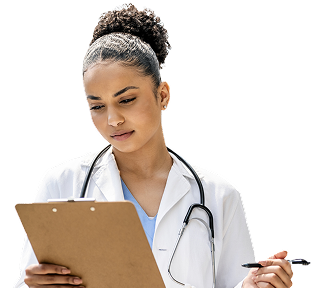
Atrial Fibrillation (AFib)
UCI Health can help you manage — and sometimes even cure — AFib with the latest treatments tailored to your needs and preferences.
AFib symptoms
AFib occurs when the top chambers of your heart are out of sync with the bottom chambers.
Everyone experiences AFib a bit differently — and symptoms tend to come and go. When you’re experiencing an AFib episode, you may feel:
- Your heart beating very rapidly
- A pounding in your chest
- A flip-flopping feeling in your chest
While some people don’t experience any symptoms, these are other common symptoms of AFib:
- Fatigue
- Heart palpitations
- Shortness of breath
- Dizziness
- Chest pain
AFib risk factors
While the exact causes of atrial fibrillation vary, there are some risk factors:
- As you age, your risk of developing AFib increases.
- Heart diseases, like heart failure and coronary artery disease increase your risk of developing AFib.
- Other health problems, like high blood pressure, sleep apnea and lung disease may increase your risk for AFib.
When to seek care for AFib
Whether you have risk factors or symptoms of AFib, it’s is a serious heart condition that requires treatment. Atrial fibrillation makes it harder for blood to flow through your heart. And this puts you at risk for stroke, blood clots and other serious health problems.
That’s why it’s so important to talk to your UCI Health primary care physician or cardiologist about your symptoms and risk factors.
They’ll do a physical exam and may recommend diagnostic tests to get to the root of your symptoms. If you have AFib, they’ll refer you to an electrophysiologist, a cardiologist who specializes in treating heart rhythm problems (arrhythmia).
AFib diagnosis at UCI Health
If left untreated or undiagnosed, AFib can cause life-threatening complications, like stroke.
Our cardiologists specialize in pinpointing the cause of your irregular heartbeat. They’ll determine if you have AFib — or another type of arrhythmia — using a series of tests.
Atrial fibrillation treatment at UCI Health
Just as everyone experiences AFib differently, there are several different ways to treat AFib.
To determine the best treatment for you, your electrophysiologist will discuss your:
- Symptoms
- Lifestyle
- Treatment goals
- Preferences
They’ll also review the risks and benefits of each treatment. From there, they’ll tailor a treatment plan specifically for you.
Stroke prevention
If left untreated, AFib can lead to life-threatening complications —most commonly stroke. That’s why one of our top priorities in treating your AFib is stroke prevention.
One of the most effective ways to reduce stroke with AFib is by taking daily blood thinners.
But if you cannot take blood thinners, we also offer left atrial appendage closure, a procedure commonly referred to as Watchman. Your provider will implant a device that prevents blood clots from moving into your bloodstream. This significantly lowers your risk of stroke.
Why choose UCI Health for atrial fibrillation care?
Your partner in care
Our goal is to make sure you thoroughly understand all aspects of AFib and your treatment options. Your electrophysiology care team will work with you to find an approach that works best for your symptoms and lifestyle. And they’ll take the time to help you understand what to expect every step of the way.
A team focused on stroke prevention
If you need a left atrial appendage closure (Watchman) for stroke prevention, you’ll have a team of experts planning your care. Every week, our team of electrophysiologists, interventional cardiologists and others reviews each case. Together they’ll plan your procedure, focusing on your treatment goals and needs.
Expertise in cardiac ablation
Our electrophysiologists have performed a high volume of cardiac ablations. They have high success rates when it comes to managing, and often even curing, AFib. Research shows that treating a high volume of patients is typically associated with better outcomes.

Schedule an appointment
Get the AFib care you need to improve your quality of life and improve your overall health.
Call 714-456-6699 to make an appointment

Find a cardiology clinical trial
Talk to your doctor to see if a cardiology clinical trial is right for you.




